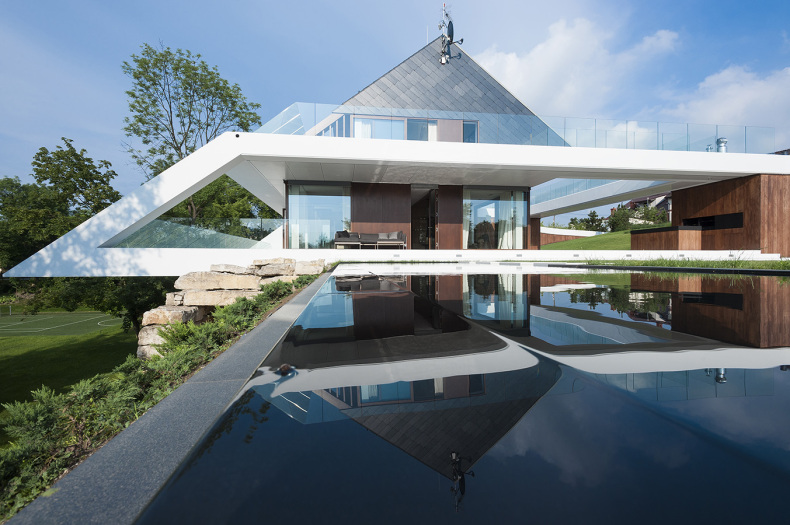In today’s world, where environmental concerns are at the forefront of global discussions, sustainable landscaping has emerged as a pivotal practice in promoting eco-friendly and aesthetically pleasing outdoor spaces.
Landscape design, when approached with sustainability in mind, not only enhances the visual appeal of an area but also contributes significantly to the health of our planet.
This article explores the principles, benefits, and practical steps involved in sustainable landscaping, guiding you toward creating greener, more resilient outdoor environments.
Principles of Sustainable Landscaping
- Native Plant Selection: One of the fundamental principles of sustainable landscaping is the use of native plants.
These plants are naturally adapted to the local climate, soil, and wildlife, requiring minimal water, fertilizers, and pesticides. By incorporating native flora, you can create a self-sustaining landscape that supports local biodiversity.
- Water Conservation: Efficient water use is crucial in sustainable landscaping.
Techniques such as xeriscaping, which involves designing landscapes that reduce or eliminate the need for irrigation, and installing rain gardens to capture and filter rainwater, are effective methods to conserve this precious resource.
- Soil Health: Healthy soil is the foundation of a thriving landscape. Practices like composting, mulching, and avoiding chemical fertilizers enhance soil fertility and structure, promoting robust plant growth and reducing erosion.
- Energy Efficiency: Thoughtful landscape design can also contribute to energy savings. Strategically planting trees and shrubs can provide natural cooling, reducing the need for air conditioning in the summer, and act as windbreaks in the winter, lowering heating costs.
- Waste Reduction: Sustainable landscaping involves minimizing waste through recycling and reusing materials. For example, yard waste can be composted, and old bricks or stones can be repurposed in garden paths or walls.

Benefits of Sustainable Landscaping
- Environmental Impact: Sustainable landscapes reduce the strain on natural resources by conserving water, reducing pollution from chemical fertilizers and pesticides, and supporting local wildlife. These practices help mitigate the effects of climate change and promote a healthier ecosystem.
- Economic Savings: Although the initial investment in sustainable landscaping may be higher, the long-term savings are substantial. Reduced water and energy bills, lower maintenance costs, and fewer expenses on fertilizers and pesticides make sustainable landscapes economically viable.
- Aesthetic and Recreational Value: A well-designed sustainable landscape can be incredibly beautiful, offering a serene and inviting space for relaxation and recreation. The diversity of plants and the presence of wildlife add to the visual and sensory appeal of the garden.
- Health Benefits: Being surrounded by greenery has been proven to reduce stress and improve mental health. Sustainable landscapes also promote physical activity, whether through gardening or simply enjoying the outdoor space.
Practical Steps to Achieve Sustainable Landscaping
- Planning and Design: Start with a comprehensive plan that considers the specific conditions of your site, such as soil type, climate, and existing vegetation. Identify areas for planting, water features, and pathways, ensuring a balanced and functional layout.
- Choose the Right Plants: Select a variety of native plants that are suited to your local environment. Group plants with similar water and sunlight needs together to create efficient watering zones.
- Implement Water-Saving Techniques: Install drip irrigation systems, use rain barrels to collect and store rainwater, and incorporate permeable paving materials to reduce runoff and promote groundwater recharge.
- Enhance Soil Quality: Regularly add organic matter to the soil to improve its structure and fertility. Use mulch to retain moisture, suppress weeds, and moderate soil temperature.
- Minimize Lawn Areas: Lawns typically require significant water and maintenance. Consider reducing the size of your lawn and replacing it with ground covers, native grasses, or other low-maintenance alternatives.
- Promote Biodiversity: Create habitats for wildlife by planting a variety of species that provide food and shelter for birds, bees, and other beneficial insects. Avoid using chemical pesticides and opt for natural pest control methods.
- Use Sustainable Materials: Choose environmentally friendly materials for hardscaping elements such as pathways, patios, and retaining walls. Recycled, reclaimed, or locally sourced materials are ideal choices.

Conclusion
Sustainable landscaping is a forward-thinking approach to landscape design that harmonizes human needs with environmental stewardship.
By adopting eco-friendly practices, you can create beautiful, functional, and resilient outdoor spaces that benefit both you and the planet.
As we move towards a greener tomorrow, sustainable landscaping stands out as a vital step in preserving our natural resources and enhancing the quality of life for future generations.
















